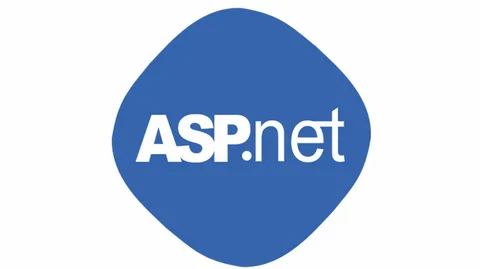As businesses continue to evolve, so must the technologies that support their operations. However, many organizations still rely on aging Microsoft .NET ASP applications to run critical parts of their business. While these legacy systems may have served you well in the past, they are increasingly becoming a liability as they approach end of life and lose support from Microsoft.
In fact, the latest .NET 8 version will only be supported by Microsoft until November 2026. Older versions are reaching the end of support by November of 2024.
Continuing to use these outdated systems can expose your business to a variety of risks, including performance issues, security vulnerabilities, and scalability limitations. Let’s explore the specific challenges associated with sticking to Microsoft .NET ASP applications and what you can do to modernize your tech stack for long-term success.
Challenges of Continuing to Use Microsoft .NET ASP Applications
- End of Vendor Support
Microsoft has announced the end of support for older versions of .NET ASP applications. This means that if your business relies on these legacy systems, you will no longer receive updates, patches, or technical support from Microsoft. Without these critical updates, your system may become more vulnerable to bugs, crashes, and security breaches.
- Security Vulnerabilities
As vendor support ends, your system will no longer receive important security patches to address newly discovered vulnerabilities. Hackers are quick to exploit security flaws in outdated software, putting your sensitive business data and customer information at risk. In an era where cybersecurity is a top concern for businesses of all sizes, sticking with unsupported software creates an unnecessary risk that could lead to costly breaches and legal ramifications.
- Incompatibility with Modern Systems
Technology is rapidly advancing, and modern software applications are being built on newer frameworks that offer better performance, scalability, and integration capabilities. Older .NET ASP applications may struggle to integrate with modern tools, APIs, or cloud platforms, creating data silos and operational inefficiencies. This limits your ability to leverage the latest innovations, such as AI, machine learning, and advanced analytics, to improve business outcomes.
- Performance Degradation
As your business grows, your legacy application may struggle to keep up with increasing demands. .NET ASP applications, designed years ago, were not built for today’s data volumes and performance requirements. Over time, these systems can become slow, inefficient, and prone to frequent crashes, resulting in operational bottlenecks that affect productivity and customer satisfaction.
- Higher Maintenance Costs
Maintaining outdated systems can become increasingly expensive. Finding developers with the expertise to work on legacy .NET ASP frameworks can be difficult and costly. As the technology becomes more obsolete, the cost of fixing bugs, maintaining performance, and troubleshooting issues will rise. Additionally, legacy systems are often more resource-intensive to run, consuming more time and money than modern alternatives.
- Limited Scalability
Businesses need systems that can evolve and grow alongside them. Legacy .NET ASP applications were not designed with modern scalability in mind, meaning that they may not be able to accommodate an increase in users, data, or business complexity. As a result, you may face significant challenges when trying to scale your operations or expand into new markets.
The Solution: Rebuild and Modernize Your .NET Applications
The good news is that you don’t have to remain stuck with an outdated and unsupported system. Modernizing your Microsoft .NET ASP applications by rebuilding them on the latest Microsoft technologies offers a way to future-proof your business and eliminate the risks posed by legacy systems.
Here’s how you can approach modernization:
- Assess Your Current System
Start by conducting a thorough assessment of your existing .NET ASP application. Identify its limitations, pain points, and how it impacts your business operations. This will help you determine whether you need a full rebuild or if certain components can be updated or integrated into a new framework.
- Explore New Technologies
Microsoft has introduced newer frameworks like .NET Core and .NET 6, which offer improved performance, cross-platform compatibility, better security features, and enhanced scalability. Transitioning to these frameworks ensures that your applications will receive ongoing support, updates, and security patches from Microsoft. They are also designed to integrate seamlessly with cloud environments, offering greater flexibility and scalability.
- Plan for Data Migration
One of the biggest challenges in modernizing legacy systems is ensuring that your data is securely and accurately migrated to the new platform. It’s important to plan for a smooth data migration that preserves historical records and minimizes the risk of data loss or corruption during the transition.
- Work with an Experienced Development Partner
Choosing the right partner to help rebuild and modernize your .NET applications is critical to success. An experienced development team can guide you through the process of transitioning from legacy technologies to the latest Microsoft platforms. They’ll help you navigate the complexities of migration, integration, and deployment, ensuring minimal disruption to your operations.
- Test, Optimize, and Scale
Once the new system is built, rigorous testing should be conducted to ensure it meets your performance, security, and scalability requirements. From there, you can optimize the system to handle future growth and adapt to changing business needs, giving you the flexibility to scale up as your business expands.
Future-Proof Your Business with Calnetic
At Calnetic, we specialize in helping businesses transition from outdated Microsoft .NET ASP applications to modern, scalable solutions that align with today’s technology standards. Whether you need a full rebuild, cloud integration, or enhanced security measures, our team of experts can guide you through every step of the modernization process.
Don’t let your business be held back by outdated systems. Contact us today, and let us help you determine and implement the best approach to modernizing your .NET applications, ensuring your business stays competitive and future-ready for the long term.




